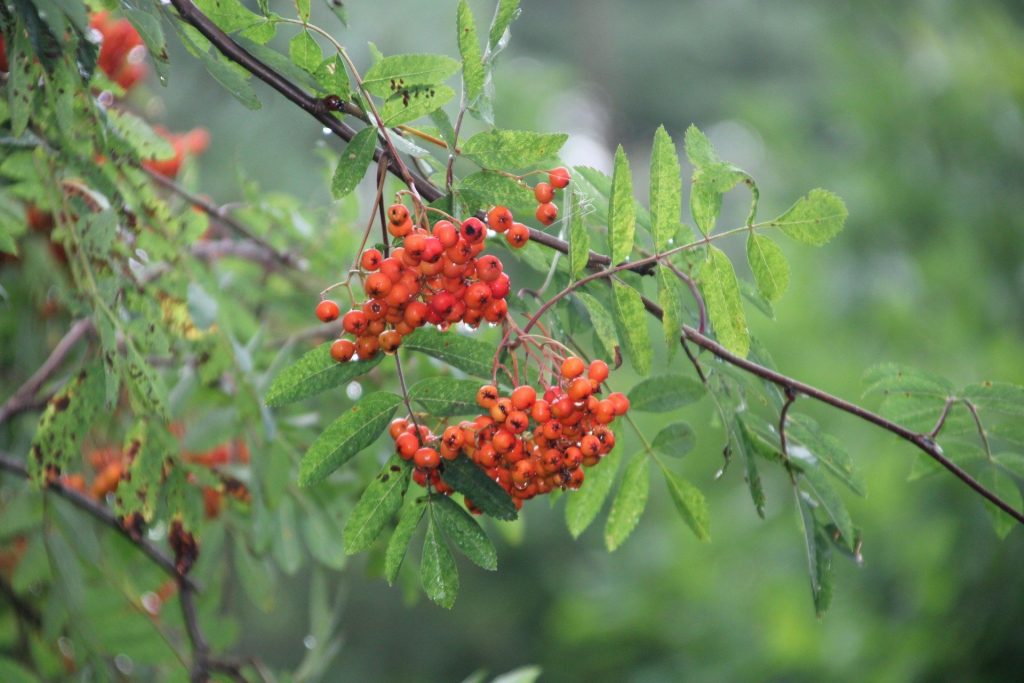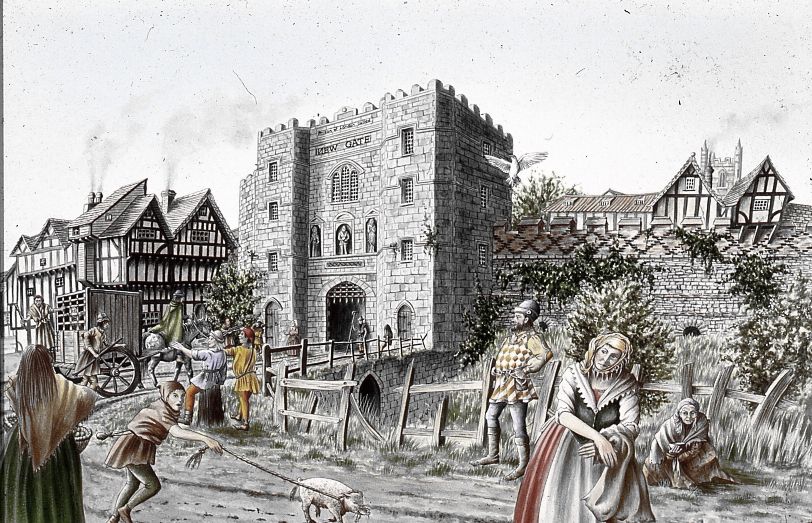
Rowan Berries, hips and haws should be ripening in Hedgerows around the country. Hips are from Rose bushes, and haws from the Hawthorn. So lots of fleshy red fruits, which will ripen from August to October.
A heavy crop is said to promise a hard winter: ‘Many haws, many snows.’
Rowans were the most powerful plant against witches.
‘Rowan tree and red thread
Hold the witches all in dread’
So, Charles Kightly, tells us in his ‘Perpetual Almanac of Folklore’. It was hung above doors, planted in gardens and made into walking sticks and other household and farming utensils. It was made into wine, and jam and a jelly delicious while eating hare.
(see my post on the March Hares and Witches)
Skeletons in my closet
Recently, I read that one of the burials a friend of mine excavated has been reexamined and reanalysed. The dig was at Bull wharf near the Vintry in the City of London. The burials dated to the 9th Century (approximately).
Bull wharf is by the River Thames, south of St Paul’s. The discovery of two burials, dating to just before the Alfredian restoration of the City of London, was in itself sensational. Archaeology had shown that the City was abandoned after the Romans left. It is revived only in the late 9th Century when King Alfred restored it.
Did these burials suggest that the restoration of the City began before Alfred came to the throne? Perhaps London was restored by the Mercians and not by Alfred and Wessex?
Perhaps this is too much to place on a couple of burials and a dating that was not precise.
However, the recent reevaluation makes the burials even more interesting. One of the two burials was in a shallow grave with a brushwood cover. Originally it was thought to a ‘proper’ burial rather than a casual interment.
But recent examination shows the woman was badly beaten a short time before she was killed. Her many wounds had begun to heal. Maybe two weeks later she was killed again with astonishing violence. She had multiple blunt force injuries.
The burial position was on the Mercian shore of the Thames at London. But was looking towards the Wessex shore across the River. This has led to speculation that the place of burial might have been a highly significant and visible site. Other Saxon execution sites have similar attributes i.e. at significant sites or at liminal locations. (I’m thinking of the Saxon execution at Stonehenge as a fr’instance.)
The recent piece I read ignores the second burial. Originally it was said to be buried with less ceremony than the other. But now, it must suggest both are executions. Unless they are both murders….
Skeletons at York
Decades ago a potential gladiatorial burial ground was found near Mickelgate. The attribution was made because a large proportion of the burials were young men, many with healed injuries to heads, arms, fingers. Over 40 of them were decapitated, much higher than the normal 5% of Roman burials.
One has recently been reexamined. The inspection showed teeth marks on the pelvis. These have now been identified as the teeth marks of a lion.
On my tours of various amphitheatres I have talked about the exotic animals that literary sources suggested Romans used for entertainment. But I would point out that the evidence comes mostly from literature and mosaics from prestigious places. I always suggested that London, Cirencester, Chester, Verulamium and York probably used bears, bulls, boars maybe dogs but, perhaps, nothing more exotic. But here is evidence that the Romans used Lions in the distance province of Britannia.
First Published September 2025
